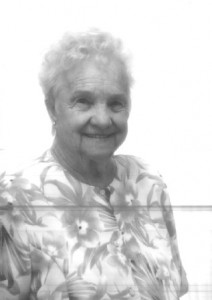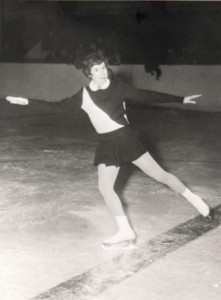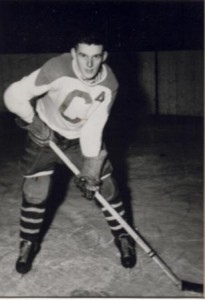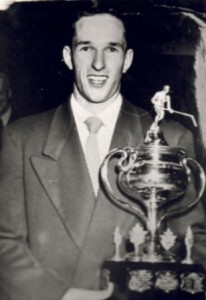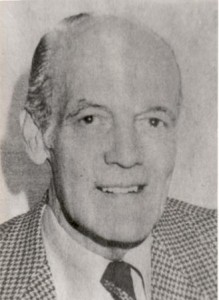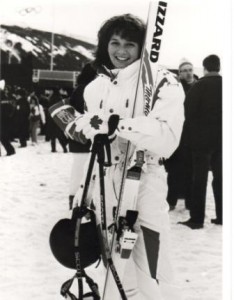 In 1973, at the age of 8, Kellie Casey moved to the
In 1973, at the age of 8, Kellie Casey moved to the
Collingwood area with her family and promptly began
training for a career in freestyle skiing.
She attended school in Thornbury and Meaford before transferring to Collingwood Collegiate for Grade 12 and 13. At age 12, she decided that her main skiing interest was not freestyle but rather the challenging downhill events. She began competing in the Toronto Ski Club racing programs, her firm goal now was to be an Olympic downhiller.
In 1980, she made the Southern Ontario Division team. She graduated in 1982 to the Ontario team and began racing
internationally. Her top finishes in the Pontiac Cup series of 1982 and 1983 earned her a place on the development squad of the
national team in 1984. In 1985, she became a member of the Canadian
National Alpine Ski Team and began a regular tour of competition on the prestigious World Cup circuit. She competed and trained throughout the world, proudly carrying the name, Collingwood through many countries in Europe and America as well as into numerous major ski centres in North America. Injuries prevented her from a serious run at the 1984 Olympic Games in Sarajevo. In 1985, she placed 4th in Canada in the downhill. In 1986, she won the overall downhill title in the Nor-Am International series. In 1987, she vaulted into the 1st seed in the World Cup Downhill standings with 5th, 8th and two 12th place finishes in Europe just prior to the Olympics. She capped her bid for Olympic selection later that year with a 2nd place finish in the Canadian Championships.
At the Calgary Olympics on February 18, 1988 she was 7th out of the
starting gate. On a steep twisting high speed turn at the top of Mt. Allan she lost visual contact with the terrain and crashed heavily into a safety net. The resulting torn knee ligament ended her quest for an Olympic medal. Following surgery and extensive knee rehabilitation she returned to World Cup competition in 1989, still ranked in the first seed on the World Cup tour.
In 1990, during a downhill training run in Argentina, she sustained a back injury. This latest problem along with a still-imperfect knee was enough for Kellie to heed the medical advice, and call it a career.
Kellie attended the University of Guelph for a Bachelor of Commerce
degree, and Brock University for a Bachelor of Education. She has been a
special education teacher and a local ski coach for two decades. Her
passion is teaching youth at-risk and teaching Indigenous youth to
reconnect with their Indigenous ancestry while she does the same. She is devoted to her three children and still spends as much time as possible skiing with them.
Kellie still proudly calls the Collingwood area her home.


